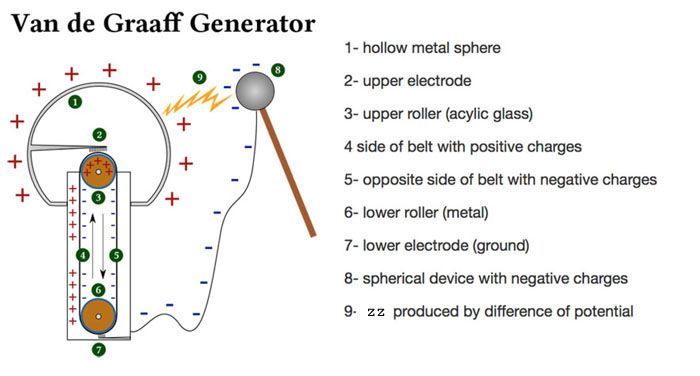Static Electricity Can Cause What Two Types of Damage in Electronic Components
Everyone has experienced static electricity. Examples include: when you see a spark in the mirror combing your hair, or you touch a door knob after walking on a rug in winter. The spark you lot see is static electricity 'discharging. And then why is it called static electricity? It's called "static" because the charges remain separated in one surface area rather than moving or "flowing" to another area as is the case of electricity flowing in a wire-- called current electricity.
Static electricity has been known every bit far back as the ancient Greeks that things could be given a static electric "charge" (a buildup of static) but by rubbing them, but they had no idea that the same energy could exist used to generate calorie-free or power machines. It was Benjamin Franklin that helped bring electricity to the forefront. He believed electricity could be harnessed from lightning.
What exactly is static electricity?
Static electricity is basically an imbalance of electric charges within or on the surface of a textile. The charge remains until it is"discharged". A static electric charge tin be created whenever two surfaces contact and separate, and at least 1 of the surfaces has a high resistance to electric electric current (and is therefore an electrical insulator). The familiar spark one sees of a static shock–more than specifically, is an electrostatic discharge– caused by the neutralization of charge.
Where is that charge coming from?
We know that all objects are made up of atoms and atoms are equanimous of protons, electrons and neutrons. The protons are positively charged, the electrons are negatively charged, and the neutrons are neutral. Therefore, all things are made up of charges. Opposite charges concenter each other (negative to positive). Like charges repel each other (positive to positive or negative to negative). Most of the fourth dimension positive and negative charges are counterbalanced in an object, which makes that object neutral equally is the case of molecules.
Static electricity is the result of an imbalance betwixt negative and positive charges in an object. These charges tin build up on the surface of an object until they find a way to be released or discharged. Rubbing certain materials against one another can transfer negative charges, or electrons. For example, if yous rub your shoe on the carpet, your body collects extra electrons from the carpeting. The electrons cling to your body until they can be released as the case when you bear upon a metal door handle.
"... The phenomenon of static electricity requires a separation of positive and negative charges. When ii materials are in contact, electrons may move from one material to the other, which leaves an backlog of positive charge on one textile, and an equal negative charge on the other. When the materials are separated they retain this accuse imbalance..."
Why does your hair stand-up when removing you hat?
As you remove your hat, electrons are transferred from chapeau to hair-- why does you hair stand up upward? Since objects with the same charge repel each other .As pilus gains more electrons they volition accept the same accuse and your hair volition stand on end. Your hairs are simply trying to get as far abroad from each other every bit possible!
What is the Triboelectric Event?
The triboelectric issue is a blazon of contact electrification in which certain materials become electrically charged after coming into contact with some other unlike material, and are so separated.
Most everyday static electricity is triboelectric. The polarity and force of the charges produced differ according to the materials, surface roughness, temperature, strain, and other properties.
The triboelectric effect is now considered to be related to the phenomenon of adhesion, where two materials composed of different molecules tend to stick together because of attraction between the different molecules. Chemical adhesion occurs when the surface atoms of two separate surfaces form ionic, covalent, or hydrogen bonds under these conditions at that place is an exchange of electrons betwixt the dissimilar types of molecules, resulting in an electrostatic allure betwixt the molecules that holds them together.
Depending on the triboelectric properties of the materials, one cloth may "capture" some of the electrons from the other material. If the two materials are at present separated from each other, a charge imbalance will occur.
Examples of Triboelectric Series that give upward electrons:
POSITIVE CHARGE - Dry man skin > leather > rabbit fur > glass > hair > nylon > wool > lead > silk> aluminum > paper LEAST POSITIVE CHARGE
Examples of Triboelectric Series that give up electrons:
NEGATIVE Charge - teflon > silicon > PVC > scotch tape > saran wrap > styrofoam > polyester > gold > nickel > rubber - To the lowest degree NEGATIVE Accuse
How to Create Static Electricity using a Van de Graaf Generator
A Van de Graaff generator is an electrostatic generator which uses a moving belt to accumulate electric accuse on a hollow metal globe on the tiptop of an insulated column. This can create very loftier electrical potentials. It produces very loftier voltage direct current (DC) electricity at low current levels. It was invented by American physicist Robert J. Van de Graaff in 1929. (Meet Reference below in Scientific American) The potential deviation achieved in modern Van de Graaff generators can reach v megavolts. A tabletop version can produce on the gild of 100,000 volts and can store enough energy to produce a visible spark. Pocket-size Van de Graaff machines are produced for entertainment, and in physics classrooms to teach electrostatics.

Readings and References:
Possibilities of Electro-Static Generators - Nikola Tesla - Scientific American 1934
Triboelectric Charging of Common Objects
Materials that Cause Static Electricity
Test your Understanding:
Source: https://www.edinformatics.com/math_science/what-causes-static-electricity.html
0 Response to "Static Electricity Can Cause What Two Types of Damage in Electronic Components"
Post a Comment